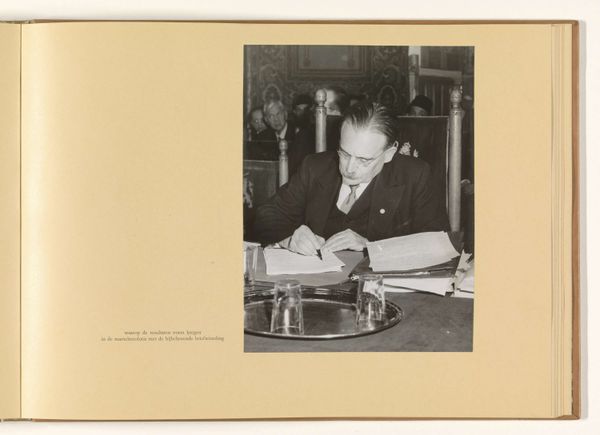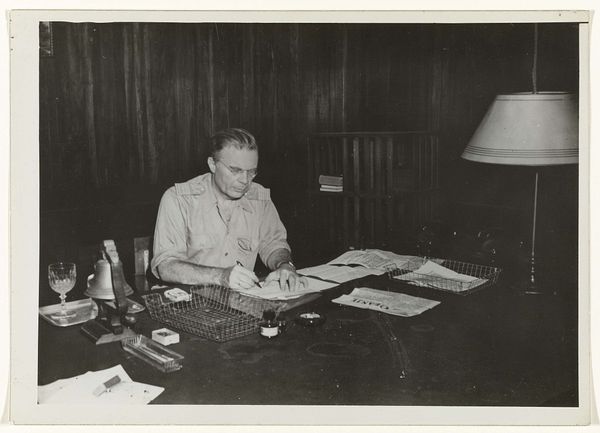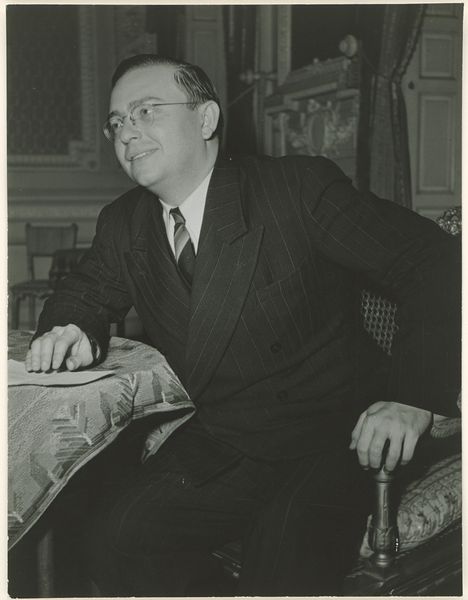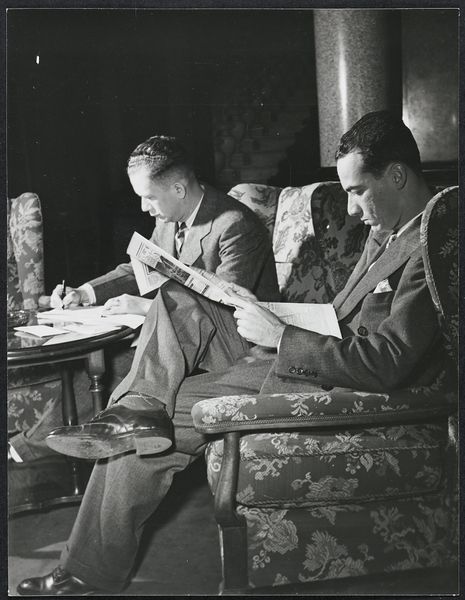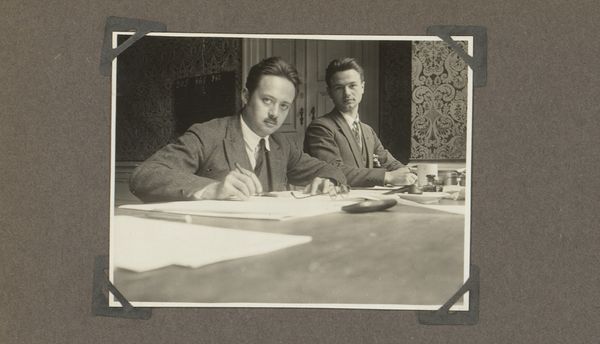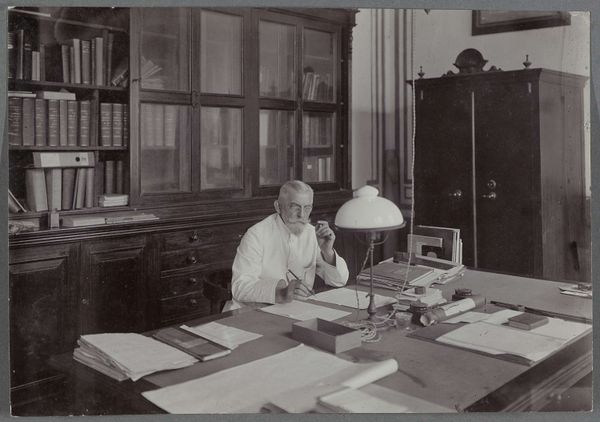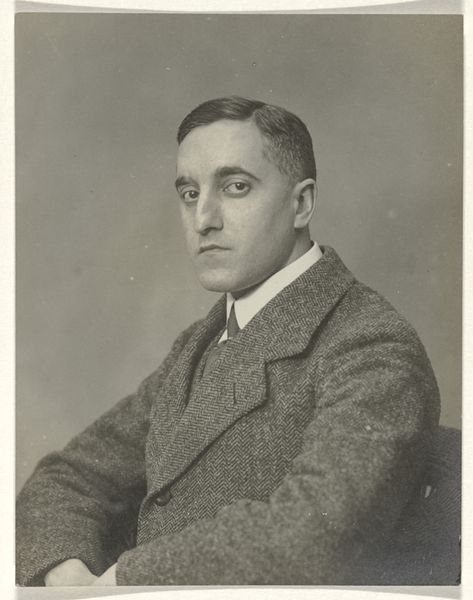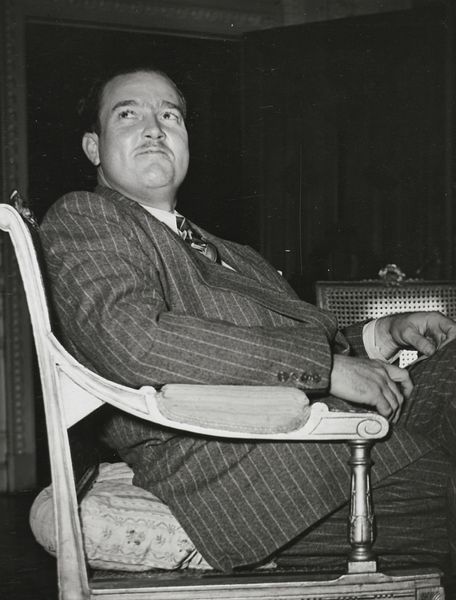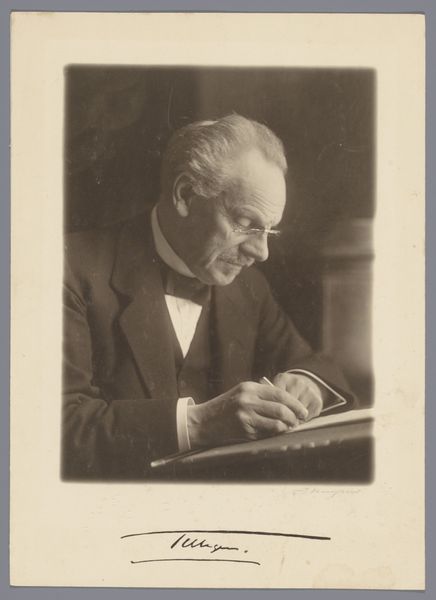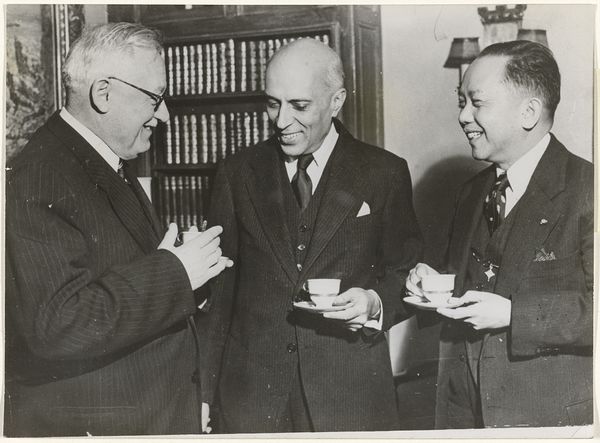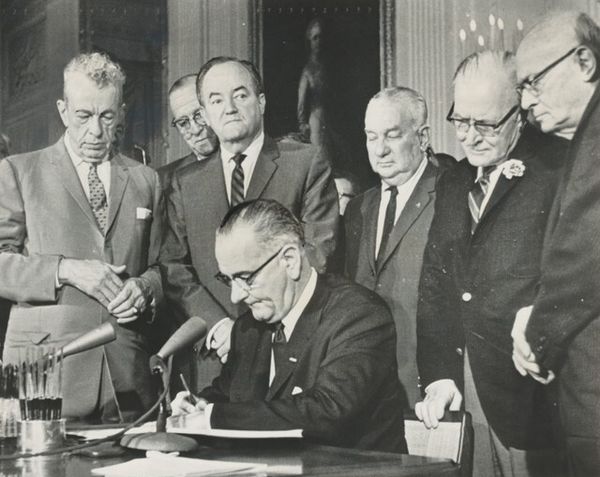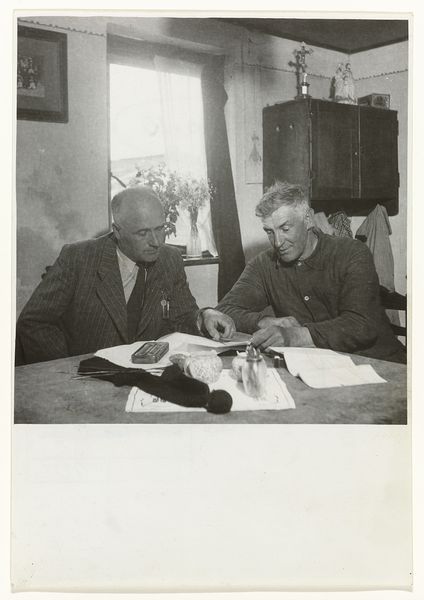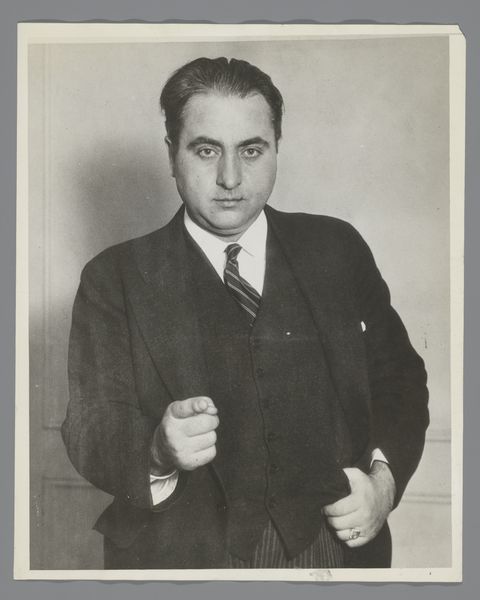
History Was Made When President Roosevelt Signed Declaration of War against Japan... 8 - 1941
0:00
0:00
photography, gelatin-silver-print
#
portrait
#
photography
#
historical photography
#
photojournalism
#
gelatin-silver-print
#
history-painting
#
modernism
Dimensions: image: 23.5 × 18.7 cm (9 1/4 × 7 3/8 in.) sheet: 25.3 × 20.5 cm (9 15/16 × 8 1/16 in.)
Copyright: National Gallery of Art: CC0 1.0
Curator: This photograph, taken by Abbie Rowe in 1941, captures President Franklin D. Roosevelt in the act of signing the declaration of war against Japan. It’s a gelatin silver print, embodying the era's visual aesthetic while documenting a pivotal historical moment. Editor: The eye is drawn immediately to Roosevelt's hand poised with the pen, all rendered in high contrast. There's an almost tactile quality to the paper’s texture against his dark suit, it evokes a heavy mood. Curator: The photograph goes beyond mere documentation. Rowe, as a White House photographer, had access and a role to frame President Roosevelt in a powerful light, demonstrating his leadership during a national crisis. Editor: Right, and how the composition really enhances the solemnity? His focused gaze downward and the stark lighting—the eye’s path follows his action with the pen across the page. We focus on the texture and material presence—of document and decision—itself. Curator: And the broader context informs the understanding of that singular, silent moment, you see. It brings to mind all the debates, the socio-political pressures, the expectations placed upon him by his cabinet and the American people following the attack on Pearl Harbor. Editor: Of course. I also think it's remarkable how even in a black-and-white image, the varying shades lend gravity and how light and shadow give us directionality to reading the artwork. Curator: Consider too, the political role imagery had in uniting a nation in a period of heightened conflict, this image could reinforce resolve. We should also consider the effect it has on public perception—especially during wartime. Editor: A compelling moment indeed, even isolated from its historical placement. Its use of sharp lines and muted grayscale provides the composition an intense emotional aura. Curator: Indeed, reflecting on the history alongside the aesthetic of modern photojournalism provides such a deeper insight into a crucial era. Editor: It brings the moment into sharp focus, for us as viewers and citizens today.
Comments
No comments
Be the first to comment and join the conversation on the ultimate creative platform.
